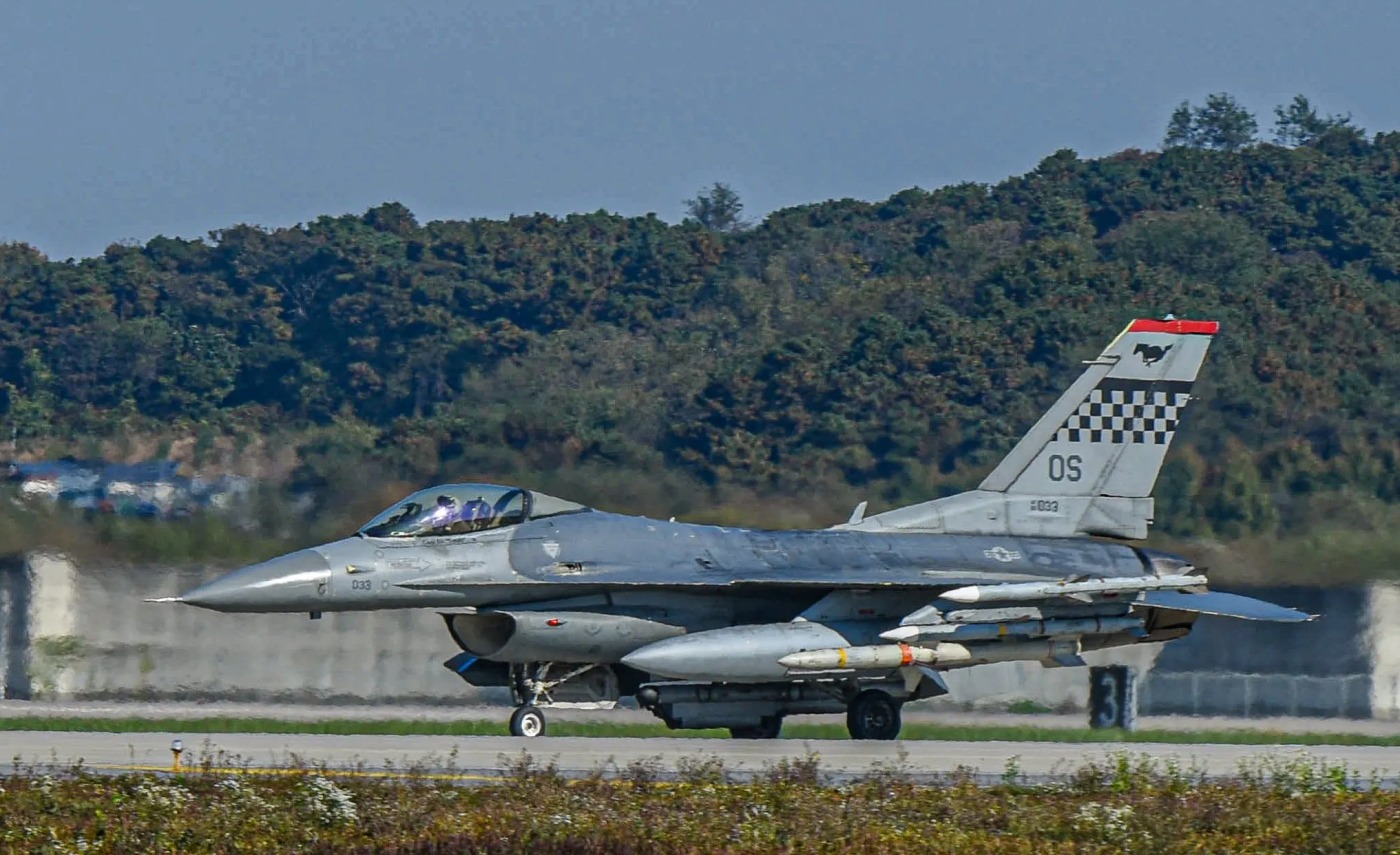An American F-16 fighter jet has crashed on the west coast of South Korea, the Yonhap news agency reported.
The jet assigned to the 8th Fighter Wing in Kunsan Air Base, about 180 kilometers south of Seoul, experienced an “in-flight emergency” over the Yellow Sea and crashed at approximately 8:41 a.m., 8th Fighter Wing Public Affairs said in a release.
The pilot ejected safely from the aircraft and was recovered at around 9:30 a.m. through joint rescue efforts by South Korean and U.S. officials. The U.S. military said the pilot is in stable condition, and an investigation is currently underway to ascertain the cause of the incident.
“We are very thankful to the Republic of Korea rescue forces and all of our teammates who made the swift recovery of our pilot possible,” said Col. Matthew C. Gaetke, 8th Fighter Wing commander. “Now we will shift our focus to search and recovery of the aircraft.
Earlier, a US F-16 fighter jet reportedly plunged into the waters of the Yellow Sea near the South Korean coast on December 11.
The Yonhap News Agency, citing undisclosed sources, reported that on December 11, an F-16 crashed into the sea shortly after departing from Gunsan around 9 a.m., approximately 180 kilometers (110 miles) south of Seoul.
However, after ejecting from the aircraft, the pilot was rescued from the sea and remained conscious following the incident. US Forces Korea has not officially confirmed the incident.
The incident took place amid heightened tensions in the region, with North Korea criticizing South Korea and the US on December 11 for engaging in joint military drills.
Through its official Rodong Sinmun newspaper, Pyongyang accused the two nations of “walking on the path of confrontation and war.”
North Korea labeled the joint drills as “futile” and provocative actions that would only accelerate South Korea’s destruction. It strongly condemned Seoul for recklessly pursuing a war on the peninsula.
The statement from North Korea suggested that, with the backing of the US, South Korea was harboring ambitions for a northern invasion and accused them of heading towards confrontation and war, describing their actions as foolish and destined for ruin.
This criticism comes at a time when South Korea and the US have increased their training exercises in response to North Korea’s escalating ballistic missile tests, including the launch of a banned new solid-fuel intercontinental ballistic missile (ICBM).
South Korea and the US argue that their joint exercises are defensive, aimed at preparing for a potential North Korean threat.
However, North Korea consistently portrays these drills as rehearsals for invasion and, in response, has conducted missile launches in the past. The situation underscores the ongoing tensions and rivalries in the region.
Meanwhile, the F-16 incident adds to recent challenges faced by US forces in the region, following a significant setback with the crash of a V-22 Osprey off the southwestern island of Yakushima.
In response to the Osprey incident, the US military took the precautionary measure of grounding its entire fleet, consisting of several hundred aircraft. This grounding aimed to conduct thorough inspections and investigations to identify any potential equipment problems that may have contributed to the accident.
Previous Incidents Involving F-16s In The Region
Kunsan, situated approximately 115 miles south of Seoul, serves as the base for the 8th Fighter Wing (known as the Wolf Pack), overseeing the operation of around 30 F-16 aircraft.
Additionally, the base houses the US Army’s 2nd Battalion, 1st Air Defense Artillery, equipped with Patriot Advanced Capability— or PAC-3— missiles.
One battalion’s batteries safeguard the base against tactical ballistic missiles, cruise missiles, and advanced aircraft.
This incident occurred seven months after one of the wing’s F-16s crashed into a farmer’s field near Osan Air Base, situated 30 miles south of the capital, on May 6.
During the May incident, the F-16 crashed into the field and subsequently caught fire, leading to extensive damage to the aircraft.
Fortunately, the pilot ejected and sustained non-life-threatening injuries, as reported by the wing at that time. Following the incident, F-16 flights in South Korea were temporarily suspended.

On August 17, an F-16 fighter jet experienced a ground emergency at Misawa Air Base, Japan. However, that incident resulted in no injuries or disruptions to flight operations or commercial flights at Misawa Airport.
In November 2022, a South Korean Air Force (ROKAF) KF-16C fighter, a licensed produced variant of the American F-16, experienced an engine failure and subsequently crashed. Fortunately, the pilot successfully ejected from the single-seat aircraft.
The incident involved a KF-16C from the 19th Fighter Wing, stationed at Jungwon Air Base (JWO) in North Chungcheong province. After the crash, a precautionary measure was taken to ground the entire KF-16 fleet, except those assigned to surveillance and emergency missions.
Similarly, on June 8, 2021, an Air Force pilot made an emergency ejection from a KF-16 fighter jet while conducting a takeoff due to a bird strike. This incident prompted the Air Force to suspend all flights for a comprehensive inspection of its aircraft fleet.
F-16s have also occasionally come under scrutiny for safety concerns. For instance, in December 2021, Japan requested the US military to suspend the complete operation of F-16 fighter jets within the country.
This request was prompted by an incident in which one of the F-16 jets released two fuel tanks in northeastern Japan before executing an emergency landing.
Besides that, the South Korean Air Force has recently announced its decision to retire one of its cutting-edge fighter jets, the fifth-generation F-35A Lightning II, due to substantial damage caused by a bird strike.
- Contact the author at ashishmichel(at)gmail.com
- Follow EurAsian Times on Google News